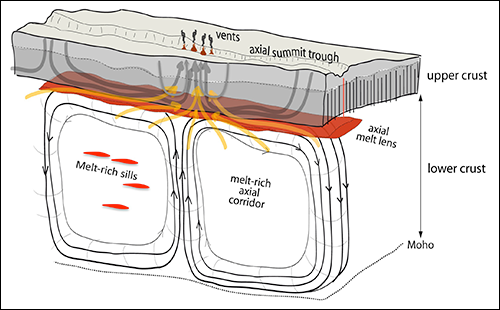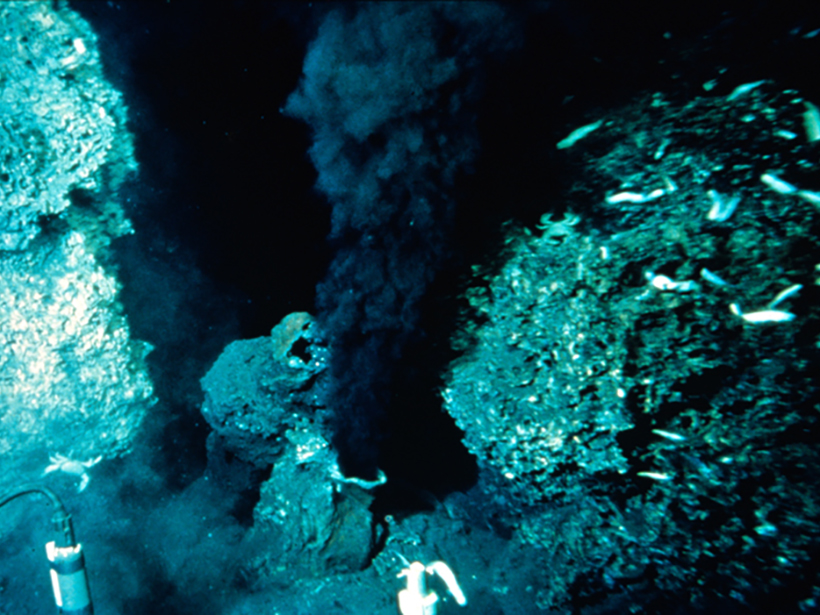Source: Geochemistry, Geophysics, Geosystems
Along fast-spreading mid-ocean ridges, elongated lenses of partially molten material are the major source of magma for forging oceanic crust. These axial melt lenses are located between a slice of brittle, upper crust dominated by hydrothermal circulation and pliable, lower crust underlain by a zone of partially molten material. Although the transfer of heat and material between these hydrothermal and magmatic layers controls crust formation, geochemical cycling, and other important processes, most thermal models of these systems do not take their interconnectivity into account.

To explore these potential couplings, Fontaine et al. developed conceptual and numerical models that simulate the interactions between these two layers along a narrow (<1 kilometer) corridor that runs parallel to the ridge. Within this strip, the team assumed that the average melt content of the lower crust is relatively high and that the melt is heterogeneously distributed. By allowing for a large reduction in viscosity in the zones with the most melt, these assumptions facilitate the formation of “wheel rim” circulation cells within the lower crust that can then interact with hydrothermal circulation in the brittle upper crust.
The team’s models indicate that convection is possible in a gabbro—an intrusive igneous rock—with an average melt content of 10%. Further, in such a scenario, the resulting interactions between the hydrothermal and magmatic layers within the corridor can form circulation cells that are 4 to 5 kilometers wide. In the simulations, the couplings between the two layers created zones of hydrothermal upflow directly above upflowing magma plumes, the spacing of which was comparable to the distances between high-temperature hydrothermal vent fields observed along the East Pacific and south East Pacific rises.
Although compatible with the “gabbro-glacier” model, in which the lower crust crystallizes entirely within the axial melt lens, the authors’ hypothesis that the lower crust is convecting beneath mid-ocean ridges also raises the possibility that the accretion of the lower crust may occur in two stages, first actively in the convecting axial corridor and then passively in the diverging plates. As the first attempt to couple models of hydrothermal circulation with magma chamber convection, this study represents an important step in the development of a comprehensive model that can simulate the detailed field observations made along Earth’s mid-ocean ridges. (Geochemistry, Geophysics, Geosystems, https://doi.org/10.1002/2016GC006737, 2017)
—Terri Cook, Freelance Writer
Citation:
Cook, T. (2017), Is the lower crust convecting beneath mid-ocean ridges?, Eos, 98, https://doi.org/10.1029/2017EO082623. Published on 02 October 2017.
Text © 2017. The authors. CC BY-NC-ND 3.0
Except where otherwise noted, images are subject to copyright. Any reuse without express permission from the copyright owner is prohibited.

